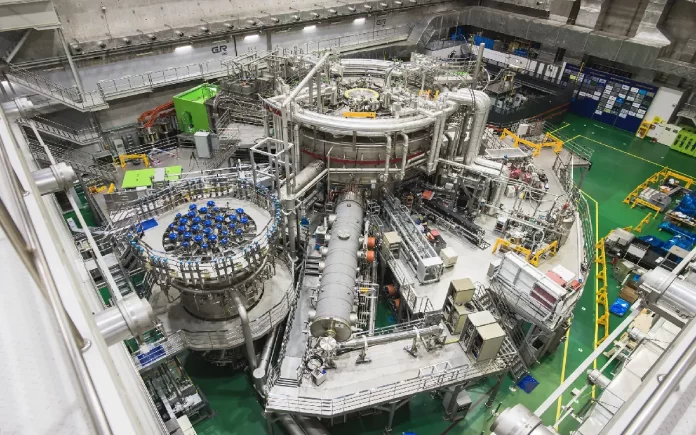Seoul: South Korea’s cutting-edge fusion research facility, the Korea Superconducting Tokamak Advanced Research (KSTAR), has recently made headlines by shattering world records in nuclear fusion. According to the Korea Institute of Fusion Energy (KFE), during its latest plasma campaign spanning from December 2023 to February 2024, the ‘artificial Sun’ managed to sustain its plasma at an astonishing ion temperature of 100 million degrees Celsius for a remarkable duration of 48 seconds.
This remarkable feat marks a significant milestone, as it surpasses the Sun’s core temperature by a staggering sevenfold, which stands at a comparatively modest 15 million degrees Celsius.
Throughout the intensive three-month campaign, KSTAR not only exceeded all prior records in ultra-high-temperature operations but also demonstrated exceptional performance levels. However, achieving this prolonged operation required the replacement of several components within the artificial Sun.
Dr. Han Hyun-seon, leading the high-performance research team, played a pivotal role in coordinating the campaign, overseeing the operations that led to the artificial Sun’s attainment of the unprecedented temperature milestone and its sustained maintenance for 48 seconds. This achievement builds upon KSTAR’s previous successes, notably in December 2016 when it reached a temperature of 50 million degrees Celsius for 70 seconds, and in December 2020 when it sustained a temperature of 100 million degrees Celsius for 20 seconds.
Also Read: Earth’s Hidden Secret: Massive Ocean Discovered 700 km Below Surface
Nuclear Fusion: A Clean Energy Solution for the Future
Nuclear fusion, the process wherein two light nuclei combine to form a heavier nucleus, holds immense promise for addressing humanity’s energy needs sustainably. Much like the Sun, which generates its energy through fusion reactions, harnessing fusion energy can provide a clean and virtually limitless source of power.
In fusion reactions, such as the fusion of Deuterium and Tritium isotopes, the resulting helium atom and released neutron yield a significant amount of energy. This energy, measured in mega-electron volts (MeV), demonstrates the potential for fusion as a potent energy source.
The recent breakthroughs in nuclear fusion, including the achievement of net energy gain by US scientists in 2022, signify significant progress towards realizing fusion as a viable energy solution. Utilizing advanced technologies, such as high-energy lasers, researchers are unlocking the potential of fusion energy, paving the way for cleaner and more sustainable power generation.
Exploring Fusion Research Worldwide
Beyond South Korea’s KSTAR, China also boasts a formidable fusion research facility known as the experimental advanced superconducting tokamak (EAST). EAST’s recent breakthrough, achieved in April 2023, saw it sustain a steady-state high confinement plasma operation for an impressive duration of 403 seconds, surpassing its previous record.
The containment of plasma under extreme conditions necessary for fusion reactions is crucial for fusion research. Through innovations such as advanced magnetic confinement techniques, researchers worldwide are making strides towards achieving stable and efficient fusion reactions.
In conclusion, advancements in fusion research, exemplified by achievements at facilities like KSTAR and EAST, offer hope for a cleaner and more sustainable energy future. By harnessing the power of the stars here on Earth, humanity can pave the way towards a brighter tomorrow.



